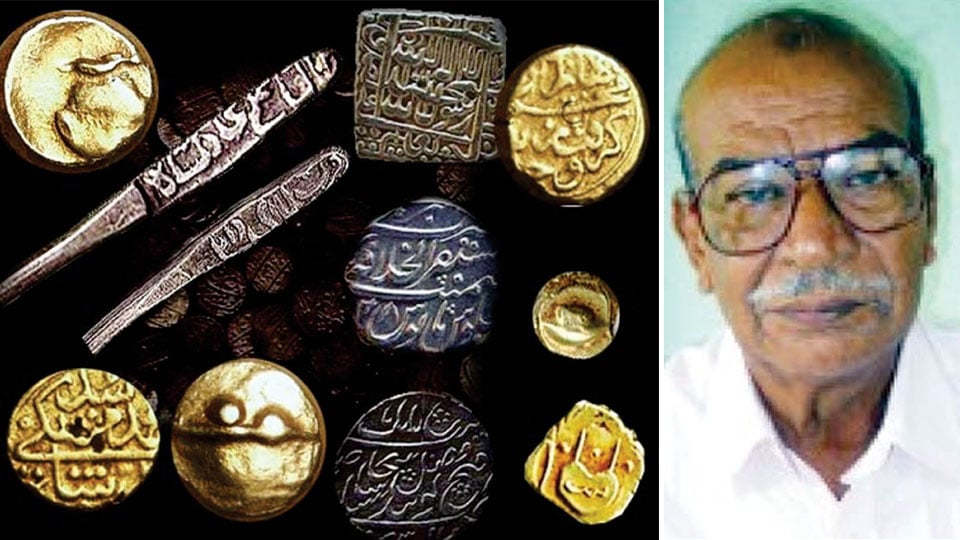Mysuru, KARNATAKA :

Mysuru:
The IQAC Maharaja’s College, Departments of Ancient History & Archaeology and Museology and the Department of History, in association with Graduate Library, University of Mysore, is organising an Exhibition of Coins (from Ancient to Modern) by the Coin Man of Mysore Dr. Abdul Rasheed.
The expo will be inaugurated by H.I. Abdul Rashid, Programme Executive (Coordination), All India Radio (AIR), Government of India, on Mar. 7 at 11 am at the Reference Hall, Graduate Library, Maharaja’s College here.
The main objective of organising this exhibition is to bring awareness of the antiquity of Indian Coinage among students and the public.
Numismatics is the study or collection of currency, including coins, tokens, paper money and related objects. The earliest references to coins in the Indian context have been found in the Vedas. Breakthrough in the Indian coinage can be traced back to 6th century BCE. Several small States emerged in Northern India during this period. The trading activities grew rapidly. We come across several terms such as the Nishka, Karshapana, Shatamana, Vimshatika which were coins of different weight and value. They are known among Numismatists as punch-marked coins. The coins of the next age were circulated in India by Indo-Greek kings of North Western India. Coins were mainly made of silver, copper, nickel and lead.
The reign of the Gupta dynasty is described by historians and scholars as the ‘Golden Age’. Numismatists have found many gold coins of this dynasty. These coins are also rich in details of their issuing authority. The gold coins of the Guptas were known as Dinaras. With the fall of the Gupta dynasty in mid-6th century CE there was a marked decline in commercial activities in Northern India. This period is significant in the history of Indian coinage because of the decline of the monetary system. However, the situation changed with the invasion of Turks in 11th and 12th century CE. The various dynasties of Delhi Sultans issued Silver and Copper coins. The inscriptions on the coins were mainly in Perso-Arabic script.
[Star of Mysore had featured “Dr. Abdul Rasheed: The Coin Man of Mysore” in SOM dated Aug. 21, 2013].
Dr. Abdul Rasheed (MBBS), popularly referred to as Dus ka Doctor as he charged a nominal fees of Rs.10 from poor patients, has an amazing collection of more than 3,000 coins, some of them dating back to as far as 300 BC and some as recent as of today.
Dr. Rasheed who worked for 22 years as a doctor in Saudi Arabia, Iran and Syria is now settled in Mysore and runs a clinic on Ashoka Road. He will be exhibiting his collection of coins through the ages from the Punch Marked Coins to the Gold Coins of the Mughals to the Imperial Coins and Coins of those of the Post-Indian Independence. Along with these, currencies of six different Continents consisting of 120 countries through the ages will also be exhibited. The exhibition is open to public and there is no entry.
source: http://www.starofmysore.com / Star of Mysore / Home> News / March 06th, 2019








